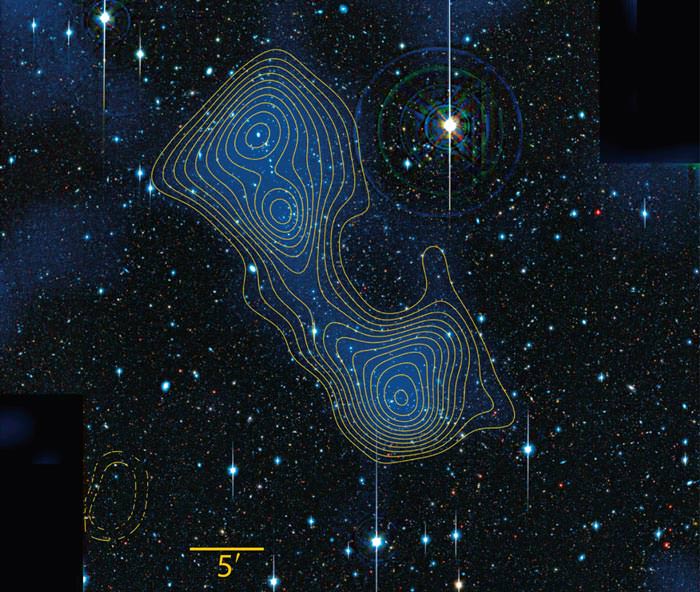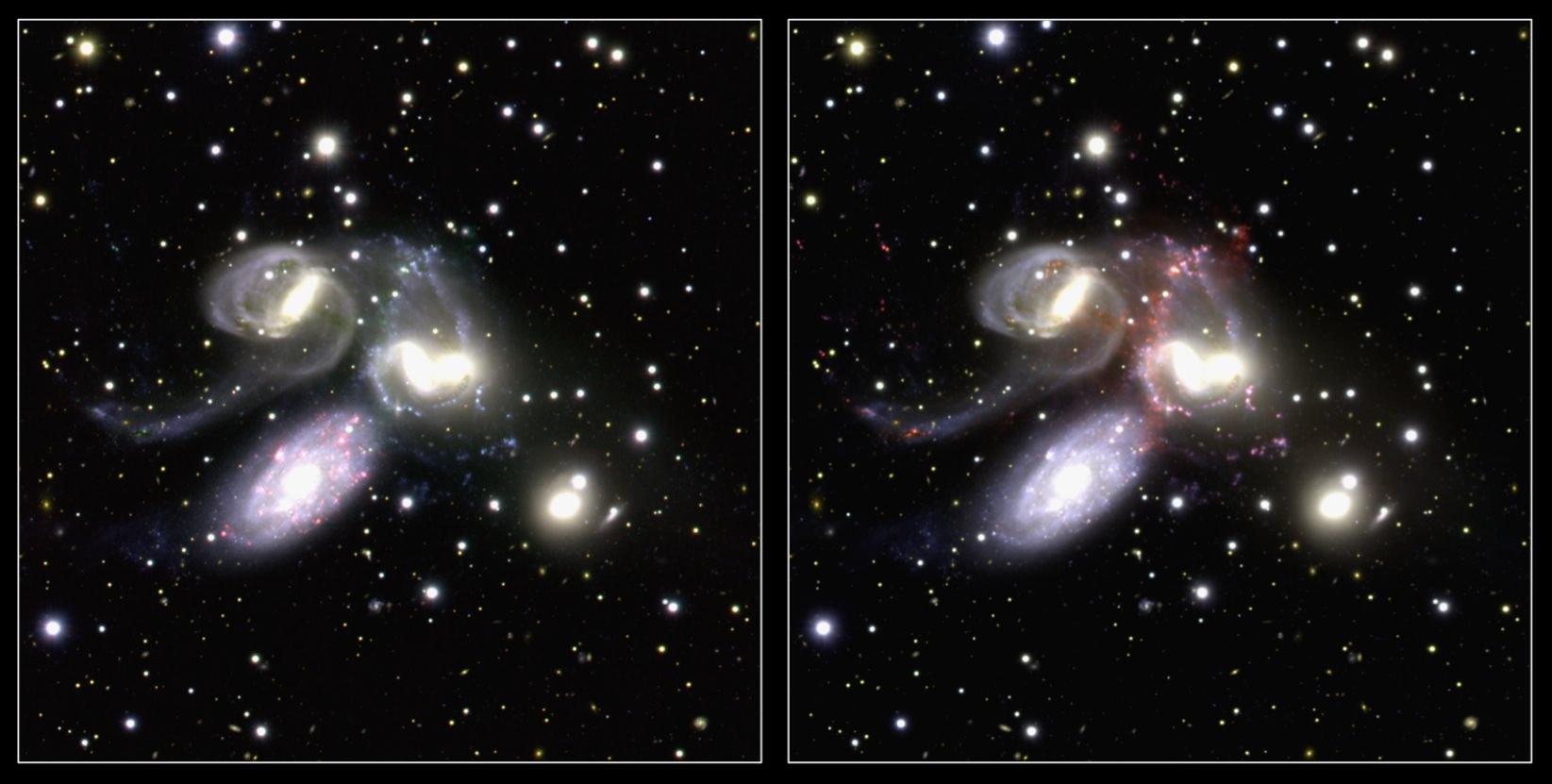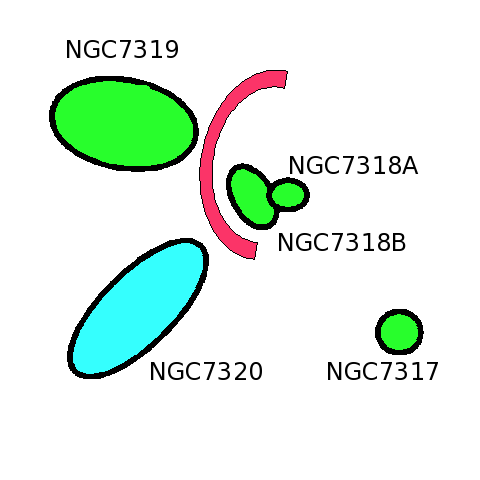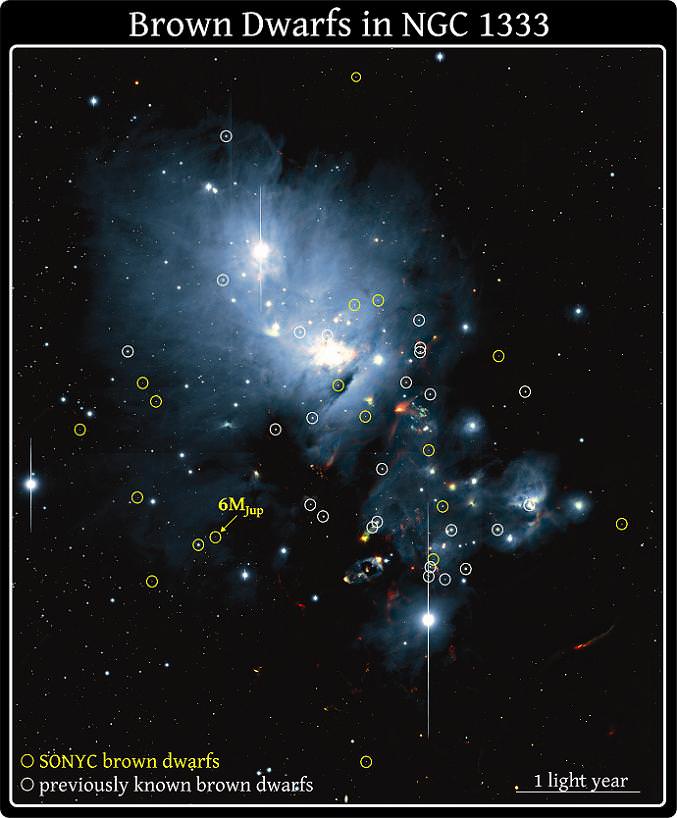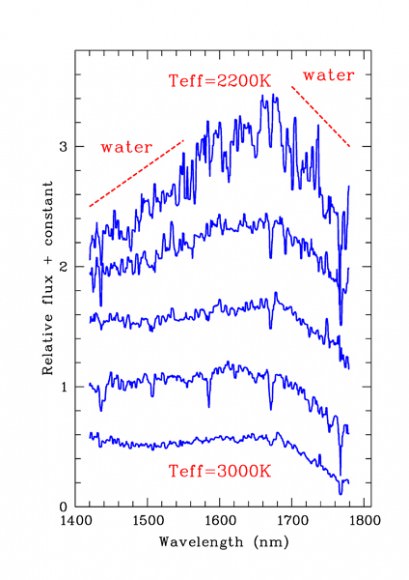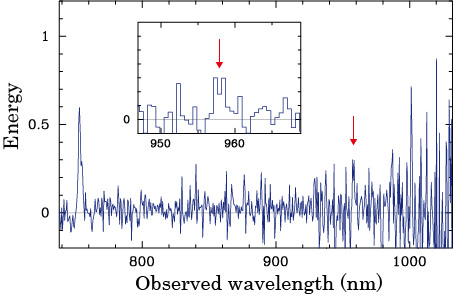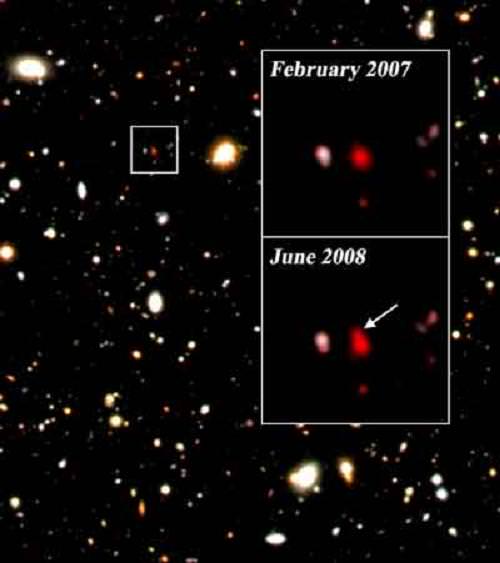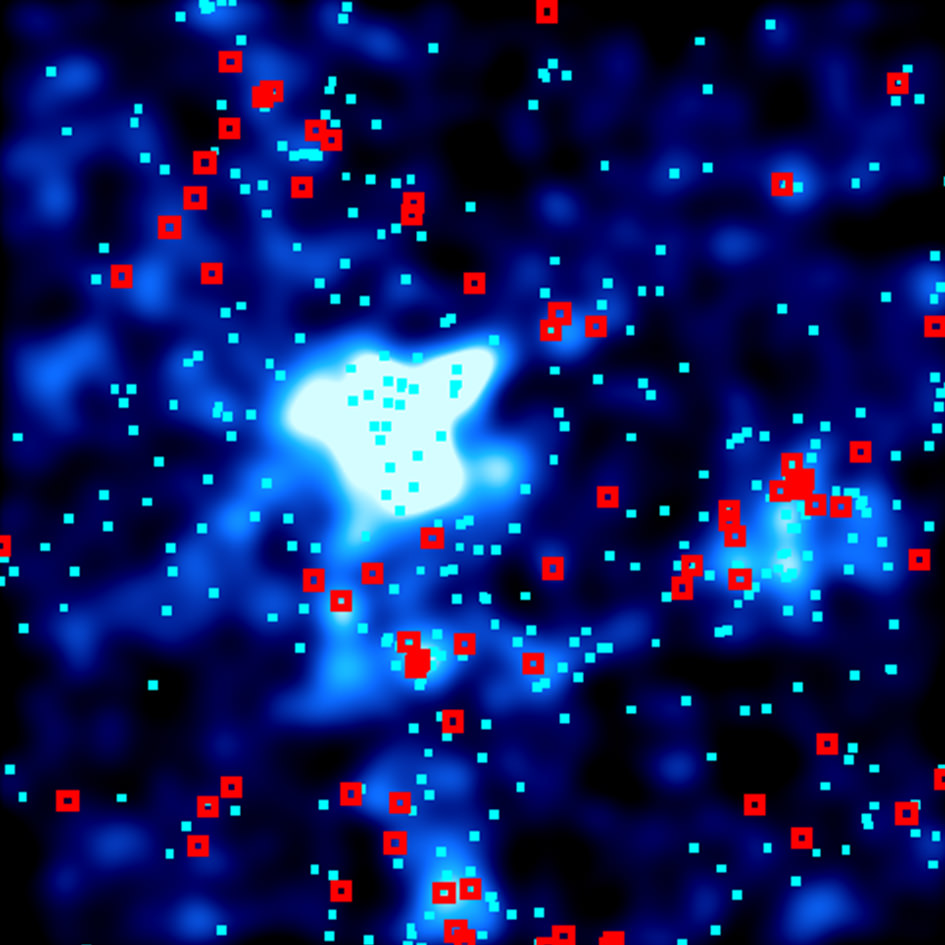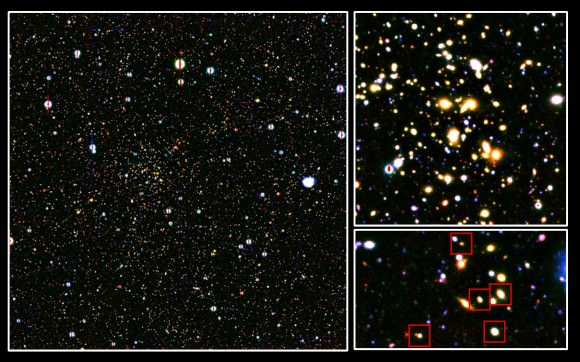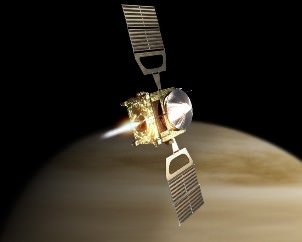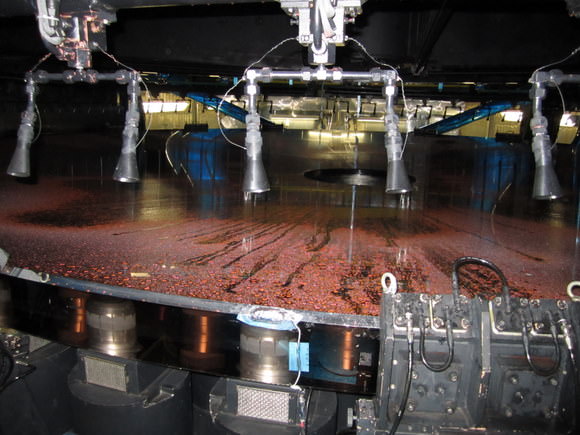A slim bridge of dark matter – just a hint of a larger cosmic skeleton – has been found binding a pair of distant galaxies together.
According to a press release from the journal Nature, scientists have traced a thread-like structure resembling a cosmic web for decades but this is the first time observations confirming that structure has been seen. Current theory suggests that stars and galaxies trace a cosmic web across the Universe which was originally laid out by dark matter – a mysterious, invisible substance thought to account for more than 80 percent of the matter in the Universe. Dark matter can only be sensed through its gravitational tug and only glimpsed when it warps the light of distant galaxies.
Astronomers led by Jörg Dietrich, a physics research fellow in the University of Michigan College of Literature, Science and the Arts, took advantage of this effect by studying the gravitational lensing of galactic clusters Abell 222 and 223. By studying the light of tens of thousands of galaxies beyond the supercluster; located about 2.2 billion light-years from Earth, the scientists were able to plot the distortion caused by the Abell cluster. The scientists admit it is extremely difficult to observe gravitational lensing by dark matter in the filaments because they contain little mass. Their workaround was to study a particularly massive filament that stretched across 18 megaparsecs (nearly 59 million light-years) of space. The alignment of the string enhanced the lensing effect.
The team’s results were published in the July 4, 2012 issue of Nature.
“It looks like there’s a bridge that shows that there is additional mass beyond what the clusters contain,” Dietrich said in a press release. “The clusters alone cannot explain this additional mass.”
By examining X-rays emanating from plasma in the filament, observed from the XMM-Newton satellite, the team calculated that no more than nine percent of the filament’s mass could be made up of the hot gas. Computer simulations further suggested that just 10 percent of the mass was due to visible stars and galaxies. Only dark matter, says Dietrich, could make up the remaining mass.
“What’s exciting,” says Mark Bautz, an astrophysicist at the Massachusetts Institute of Technology, “is that in this unusual system we can map both dark matter and visible matter together and try to figure out how they connect and evolve along the filament.”
Refining the technique could help physicists understand the structure of the Universe and pin down the identity of dark matter (whether it’s a cold slow-moving mass or a warm, fast-moving one. Different types would clump differently along the filament, say scientists.
Image caption: Dark-matter filaments, such as the one bridging the galaxy clusters Abell 222 and Abell 223, are predicted to contain more than half of all matter in the Universe. (credit: Jörg Dietrich, University of Michigan/University Observatory Munich)

